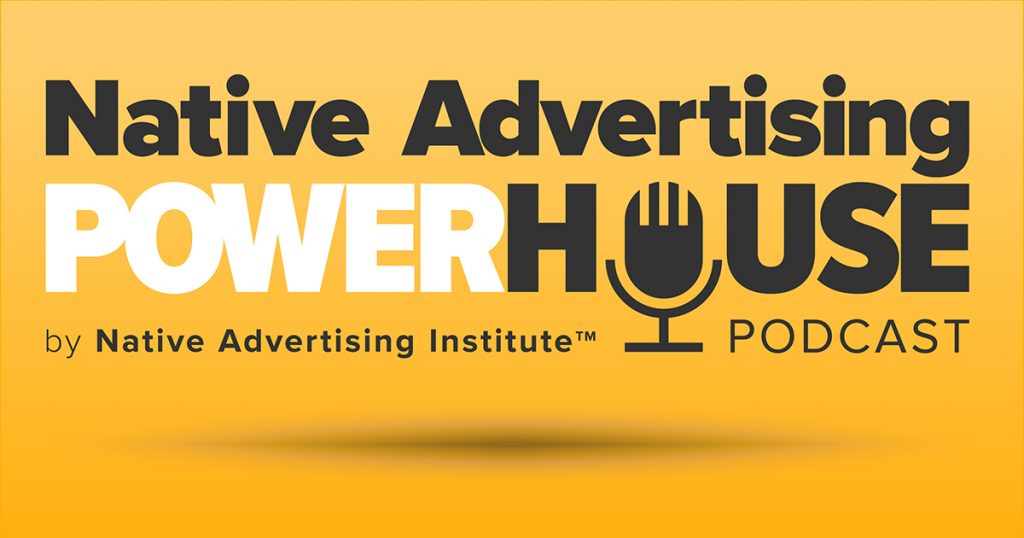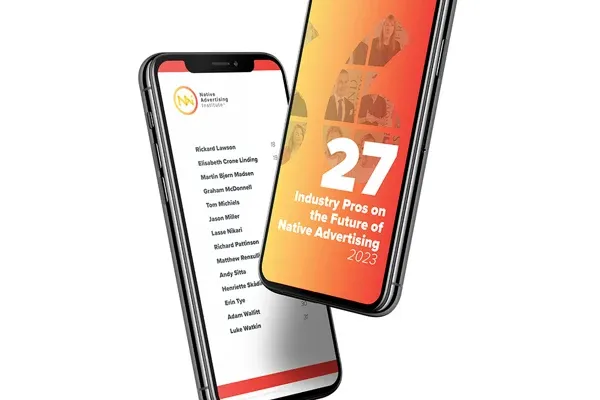 Details
Details

By Julien Mosse
COO of Ligatus
Paris, France
Connect
In an increasingly quality-driven ecosystem, the adoption of native advertising is on the rise; with native ad spend expected to hit €13 billion across Western Europe by 2020. But there is still a lack of knowledge about what native advertising is, and how it differs from other advertising methods.
As publishers look to reduce monetization partnerships, they must focus on quality over quantity, favoring ad formats that enhance the user experience while avoiding intrusion on the consumer journey.
For brands, it is vital to ensure that ads reach the desired audience and are served alongside publisher content that is a good fit for their brand image. For both publishers and advertisers to achieve optimum results, they need a strong understanding of the advertising options available to them.
With this in mind, the industry as a whole must educate itself about what native really is, dispelling the common misconceptions of this format.
According to a study by BBC StoryWorks, 64% of consumers are happy to read content-led marketing as long as it is clearly labeled.
Misconception 1: Native is misleading
Native advertising is often viewed as misleading and deceitful. Formulated to blend seamlessly with the content it is served alongside and to provide contextually relevant ads, native raises concerns that readers may be misled into clicking on an advert.
As much as readers don’t want their online experience to be disrupted by irritating ads, they also do not want to be duped into believing they are clicking on genuine content when it is actually an ad disguised as such. It’s also important for advertisers to ensure the title, image and description matches the content of the advertising, to avoid readers feeling misled and put into a negative state of mind.
However, this is something that can be easily remedied by content producers and brands themselves. Firstly, it is important for publishers to clearly label their ads as sponsored content and thereby demonstrate transparency to their audience.
RELATED: Banner Ads Are Just as Effective as Labels in Terms of Ad Recognition
According to a study by BBC StoryWorks, 64% of consumers are happy to read content-led marketing as long as it is clearly labeled. And for this reason, it is also vital for brand publishers to not only label ads, but also make the disclosure in an honest and upfront way; using clearly legible and unambiguous text as opposed to an almost hidden footnote, included as small print.
Secondly, advertisers must choose their creative elements wisely: selecting imagery, tiles, and descriptions that complement the publisher site, but don’t cross the line into mimicry. Even subtle ads should be distinguishable and make it clear where those who click on them will end up. Misleading and ambiguous titles should also be avoided at all costs.
In reality, native advertising can be used to increase transparency and gain user trust. With a significant rise of fake news and clickbait in 2017, native advertising is becoming more appealing as premium native ad platforms do not allow these types of advertisers into their networks. Transparency is now a central part of the digital culture and – when clearly labeled – native advertising offers both publishers and advertisers the opportunity to build relationships with consumers based on openness and trust.
Because native video advertising is largely outstream it is often assumed outstream is always native but this isn’t true.
Misconception 2: All new ad formats are native
As native becomes a key part of the advertising landscape, many assume all new ad formats fall into the native category, but this widespread misconception is tainting the reputation of high-quality editorial native advertising. This is particularly true of social media advertising, which was a key driver in the development of native because mobile-first social platforms required an integrated in-feed ad format.
But social native is very different from editorial native as it is delivered alongside user-generated content, which brings brand safety risks and limits the opportunity for contextual placement.
RELATED: The Main Categories of Native Advertising Everyone Needs to Understand
Another example of this misconception is outstream video advertising which has accelerated significantly of late to become the largest video format, with spend increasing by 94% to £900 million last year. Outstream is a stand-alone video ad format served outside the video player and can be used to monetize non-video inventory. Because native video advertising is largely outstream it is often assumed outstream is always native but this isn’t true.
There are non-native outstream video ad formats that can disrupt or intrude on the user experience, such as auto-playing videos with sound, which aren’t native and have been identified by the Coalition for Better Ads as not meeting its required advertising standards. These type of ads give outstream video a bad name and, due to the assumption that all outstream is native, also have a negative impact on the reputation of native advertising.
Outstream video, and other emerging ad formats are only native if they match the look and feel of the editorial environment where they are served, blending seamlessly with the content and not disrupting the user experience.
Well-executed native advertising entails distributing highly engaging branded content that adapts to the form and style of the page, in addition to entertaining and informing the audience.
Misconception 3: Native offers readers no value
As audiences continue to become irritated with the bombardment of irrelevant ads, both publishers and advertisers must make enhancing the user experience a top priority. Native ads are often grouped with other, less valuable, forms of digital advertising but when deployed properly native can offer a welcome, engaging experience.
Well-executed native advertising entails distributing highly engaging branded content that adapts to the form and style of the page, in addition to entertaining and informing the audience.
One of the chief factors in achieving this is the creation of smart partnerships between advertisers and premium publishers, whose inventory is analyzed to ensure the right fit for brand strategy.
RELATED: 9 Books Native Advertisers Need to Read - and Why
But content also plays a major part: to deliver compelling user experiences, ad creative must be both high quality and closely aligned with its surroundings, and their subject matter.
Nowhere is this contextual relevancy more important than in mobile advertising, which is expected to account for 75% of total US digital ad spend this year. The short attention spans of consumers on the move, coupled with the limited size of mobile screens, means there is simply no place for irrelevant advertising. Native advertising provides a pertinent, valuable experience to mobile users, and is also designed to adapt to whatever device or screen it is viewed on.
But native advertising and programmatic are in no way opposed to one another, in fact, they complement each other extremely well.
Misconception 4: Native advertising and programmatic don’t work together
From the advertiser perspective, the key benefit of native is — of course — its ability to capture audience attention without being interruptive. After all, carefully picked images, titles, and descriptions placed beside related content are far more likely to positively seize consumer interest, and make an impression. Yet it’s also essential not to overlook the other core advantage this harmony brings: it makes ads more brand safe.
Publishers who use native care about their audiences and want to monetize content in a way that will improve quality, maintain integrity, and enhance the user experience and ensure their inventory remains brand safe. In fact, high profile brand safety issues in recent months have caused advertisers to turn away from programmatic media buying to invest more in native.
RELATED: Best Practices for Programmatic Native Advertising
But native advertising and programmatic are in no way opposed to one another, in fact, they complement each other extremely well. Native provides non-intrusive advertising, while programmatic delivers scale and efficiency, with the possibility of precisely targeting ads to the right audiences.
Together programmatic and native are an unstoppable force, benefiting publishers and advertisers alike and offering an ideal combination of quality content, brand safety, reach, and efficiency.
It is important for the industry to re-evaluate native advertising and differentiate between myth and reality. By shifting focus to the audience and understanding how their experience can be enhanced, native advertising can be a win-win situation for everybody, particularly when coupled with programmatic. All advertisers need to do is keep an eye on content standards so native always realizes its full potential.



